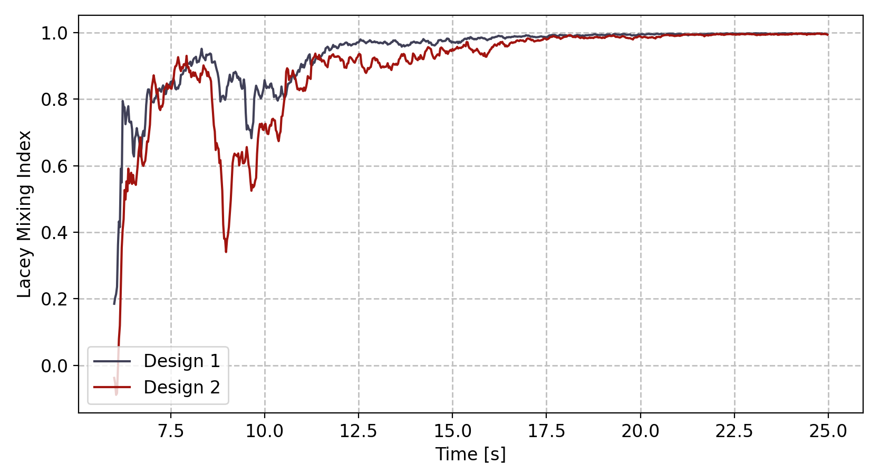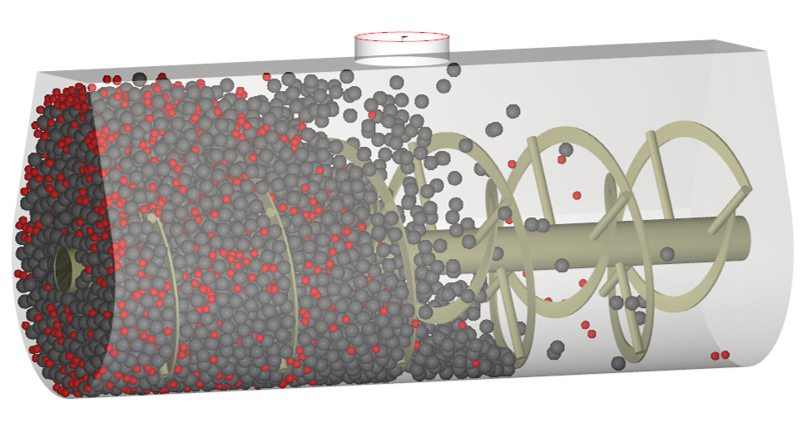Field of expertise:
Methods:
Application area:
Industry:
Simulation and performance comparison of two types of ribbon mixer designs was made using Ansys Rocky. Analysis of the mixing, determination of the required operating time and mixing speed using the DEM discrete element method results in more accurate design and lower costs.
The benefits of simulation analysis of mixers using Ansys Rocky:
- Optimises process capacity and efficiency;
- Provides a more comprehensive insight into the process;
- Estimating and increasing efficiency;
- Mixing performance calculation, efficiency estimation;
- Wear particles removal;
- Permeability improvement, volume ratio optimisation;
- Foof processing analysis.
During the equipment design phase, different geometries can produce vastly diverse particle behavior, and simulation can map the results. For example, the double helixes in mixer Design 1 are symmetrical, and we would expect the inner ribbon to move particles toward the center and the external ribbon to move particles away from center. However, design 2 is non-symmetrical, with the theory that the internal and external ribbons will nudge particles rightward and leftward, respectively. Simulation provides data based on actual particle behavior.
DEM tools enable engineers to easily obtain deeper insights into the process “micro-environment” at a fraction of the cost needed to run an experiment. These simulation insights are useful to achieve reliable process performance and assured product quality.



